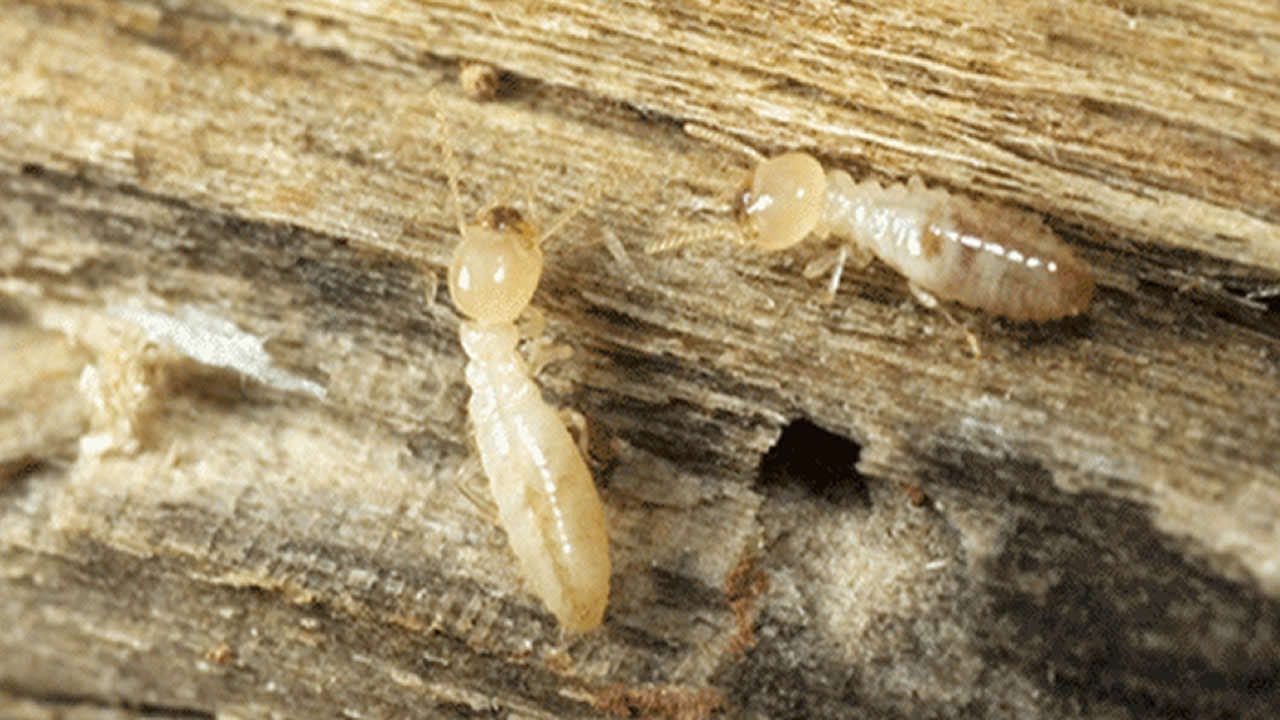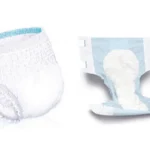Termites are one of the most destructive pests that can silently wreak havoc on your home or commercial property. While many people recognize the damage caused by adult termites, few realize the importance of spotting tiny baby termites early. These immature insects might be small and seemingly harmless, but they are the early indicators of a full-blown infestation in the making. Catching them early can save you thousands in repair costs and help you preserve the structural integrity of your property.
Contents
- 1 Why Baby Termites Matter
- 2 The Life Cycle of Termites: Understanding the Baby Stage
- 3 Key Characteristics of Tiny Baby Termites
- 4 Where to Look for Baby Termites
- 5 Signs That Indicate Baby Termites Are Nearby
- 6 Why Early Detection Is Crucial
- 7 Common Mistakes When Trying to Identify Baby Termites
- 8 DIY vs. Professional Help
- 9 How to Prevent Termite Infestation
- 10 What to Do If You Spot Baby Termites
- 11 Conclusion
Why Baby Termites Matter
Tiny baby termites, also known as termite nymphs, are the immature form of termites that eventually grow into the workers, soldiers, or reproductive members of the colony. Their presence is an early warning sign that a colony is establishing itself nearby or already inside your property. While adult termites are usually hidden away within wooden structures or soil, baby termites might occasionally be spotted when colonies are disturbed or during inspections.
Identifying these pests in their early stages allows you to take swift and effective action, ideally with the help of a professional Pest Control service before they cause significant damage.
The Life Cycle of Termites: Understanding the Baby Stage
To identify baby termites accurately, you need to understand the termite life cycle:
- Egg Stage – All termites start as eggs laid by the queen. These are often hidden deep within the nest and are rarely seen by homeowners.
- Nymph Stage – Once hatched, the young termites enter the nymph stage. These are what we commonly refer to as “baby termites.” They are white or cream-colored, soft-bodied, and resemble tiny ants.
- Adult Termites – As they mature, the nymphs differentiate into various castes: workers, soldiers, and reproductives (alates).
Since the baby stage is so early in the cycle, spotting nymphs offers the greatest advantage for early intervention.
Key Characteristics of Tiny Baby Termites
It’s easy to confuse baby termites with other small insects like ants or even maggots, but here are some defining characteristics:
- Color: Baby termites are typically white or translucent.
- Size: They are very small, often less than 1/10th of an inch.
- Shape: They have soft, elongated bodies with straight antennae and no waist indentation (unlike ants).
- Behavior: You may spot them when tearing open damaged wood or near mud tubes built by the colony.
Where to Look for Baby Termites
Spotting baby termites isn’t easy, but knowing where to look increases your chances:
1. Wooden Structures
Check any wood that seems soft, damp, or hollow-sounding. Tap on beams, baseboards, or floors—any hollow sounds could indicate internal damage.
2. Basements and Crawlspaces
These dark and damp environments are ideal for termite colonies. Inspect the underside of wooden joists or supports, especially near the foundation.
3. Mud Tubes
These pencil-thin tunnels made of soil and wood particles are used by termites for travel. If you break a mud tube, you may spot workers or baby termites inside.
4. Furniture
Wooden furniture, especially if it’s old or has been exposed to moisture, is another common hiding place.
5. Walls and Ceilings
Drywall can be a surprising food source. Bubbling paint, sagging walls, or faint lines on walls can signal termite presence.
Signs That Indicate Baby Termites Are Nearby
You may not always see the baby termites themselves, but certain clues can alert you to their presence:
- Swarmers: The presence of winged adult termites often means a colony has matured—and where there are adults, there were once nymphs.
- Frass: These are termite droppings. Drywood termites, in particular, leave behind small, pellet-like waste.
- Shedded Wings: Finding tiny wings near windows or entry points means swarmers have recently emerged, suggesting a thriving colony.
- Damaged Wood: Wood that crumbles easily or shows maze-like patterns inside is a clear red flag.
Why Early Detection Is Crucial
The earlier you detect baby termites, the better your chances of avoiding extensive property damage. Termites can chew through wood, flooring, and even wallpaper undetected for months or years. Once a colony is fully established, it can cost homeowners thousands of dollars in repairs and pest management.
By identifying the presence of tiny baby termites early on, you can:
- Prevent extensive structural damage.
- Save money on expensive extermination methods.
- Avoid future reinfestation through early intervention and ongoing monitoring.
Common Mistakes When Trying to Identify Baby Termites
1. Confusing Them With Ants
Ants have a pinched waist, elbowed antennae, and darker coloring, whereas baby termites are uniform in shape and pale in color.
2. Assuming They’re Harmless
Some homeowners see baby termites and assume they aren’t dangerous yet. But by the time you spot them, the colony is already active and expanding.
3. Ignoring Occasional Sightings
Even a single baby termite sighting should be a cause for alarm. These insects don’t live alone—there’s always a colony nearby.
DIY vs. Professional Help
While there are over-the-counter solutions and natural remedies that claim to eliminate termites, they rarely address the root of the problem. DIY treatments might kill the few termites you see but miss the thousands you don’t.
Hiring a Pest Control professional ensures:
- A thorough inspection of the property.
- Identification of the species and extent of the infestation.
- Safe, targeted treatments that eliminate the entire colony.
- Preventative measures to stop future infestations.
How to Prevent Termite Infestation
Even after dealing with an infestation, prevention is key to keeping termites away. Here are several preventative measures:
1. Eliminate Moisture
Termites thrive in moist environments. Fix leaking pipes, clean gutters, and ensure good ventilation in crawlspaces.
2. Use Treated Wood
Pressure-treated wood is less susceptible to termite attacks. When building or renovating, opt for treated materials.
3. Regular Inspections
Conduct routine checks on wooden areas, especially basements and attics. Even better, schedule annual professional inspections.
4. Clear Wood Debris
Don’t leave firewood or lumber near your foundation. These attract termites and make it easier for them to enter your home.
5. Seal Entry Points
Cracks in the foundation, walls, or roofing should be sealed promptly to reduce potential entryways.
What to Do If You Spot Baby Termites
Here’s a step-by-step guide:
- Don’t Panic or Disturb Them Too Much
Disturbing the nest could cause the termites to retreat deeper into the structure, making them harder to eliminate. - Document What You See
Take photos of the baby termites and the affected area. This helps professionals assess the situation quickly. - Contact a Pest Control Professional
Don’t delay. Immediate expert intervention is the most effective way to address and eliminate a termite infestation. - Avoid DIY Chemical Treatments
They often fail to kill the colony and can be hazardous to your health. - Prepare Your Home for Inspection
Clear access to the affected areas so that the inspector can fully evaluate the infestation.
Conclusion
Tiny baby termites might seem insignificant at first glance, but they are your first and most important sign of trouble ahead. By understanding what to look for and acting quickly, you can stop an infestation before it spreads and avoid the costly consequences that come with unchecked termite damage. Whether you’re conducting a routine inspection or responding to signs of trouble, never underestimate the value of professional support. Pest Control services can be your best defense against these silent destroyers.
Don’t wait until your walls are crumbling or your floor feels hollow—start paying attention to the signs today. Identifying and addressing tiny baby termites early on could be the smartest move you make for your home’s future.


